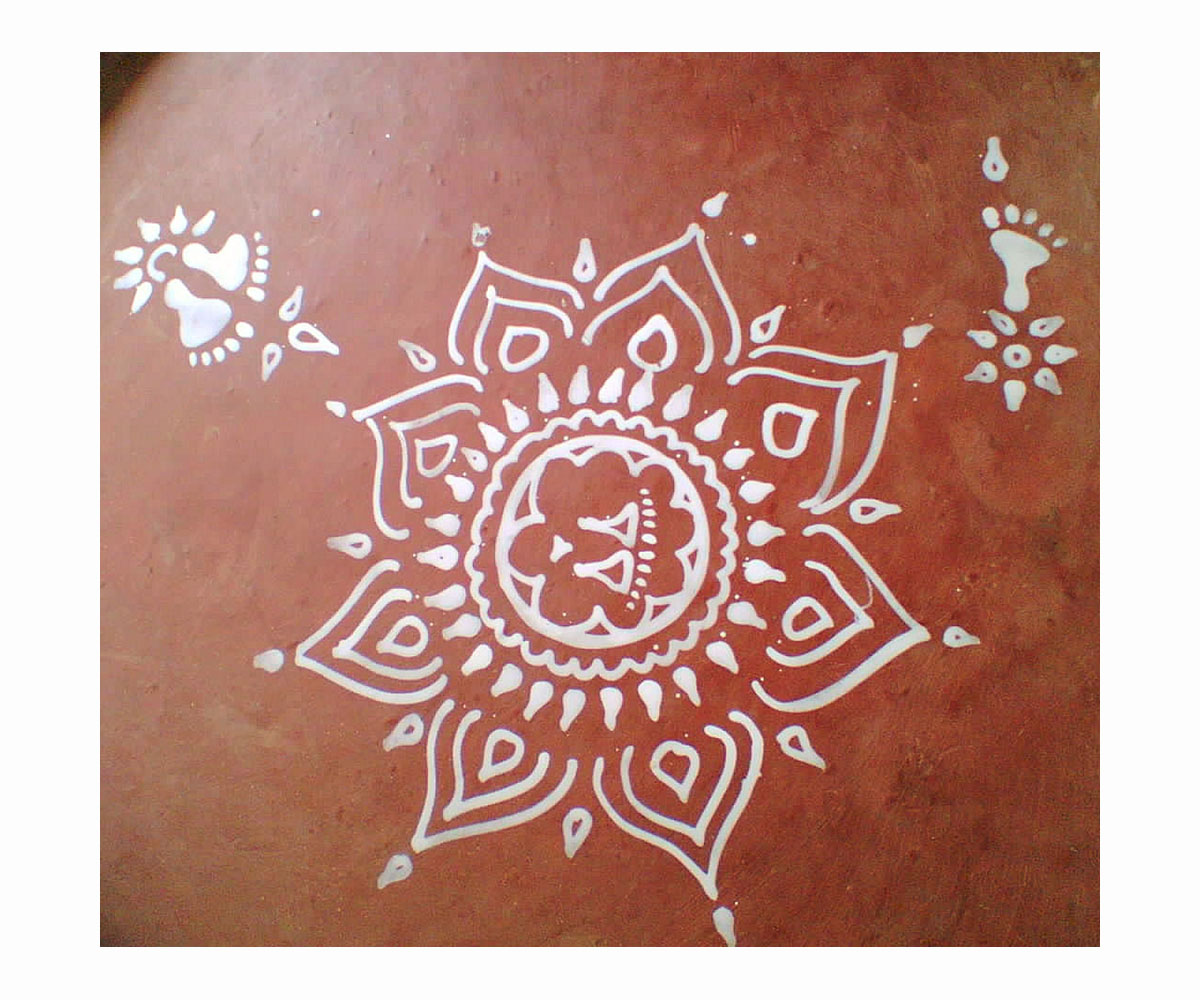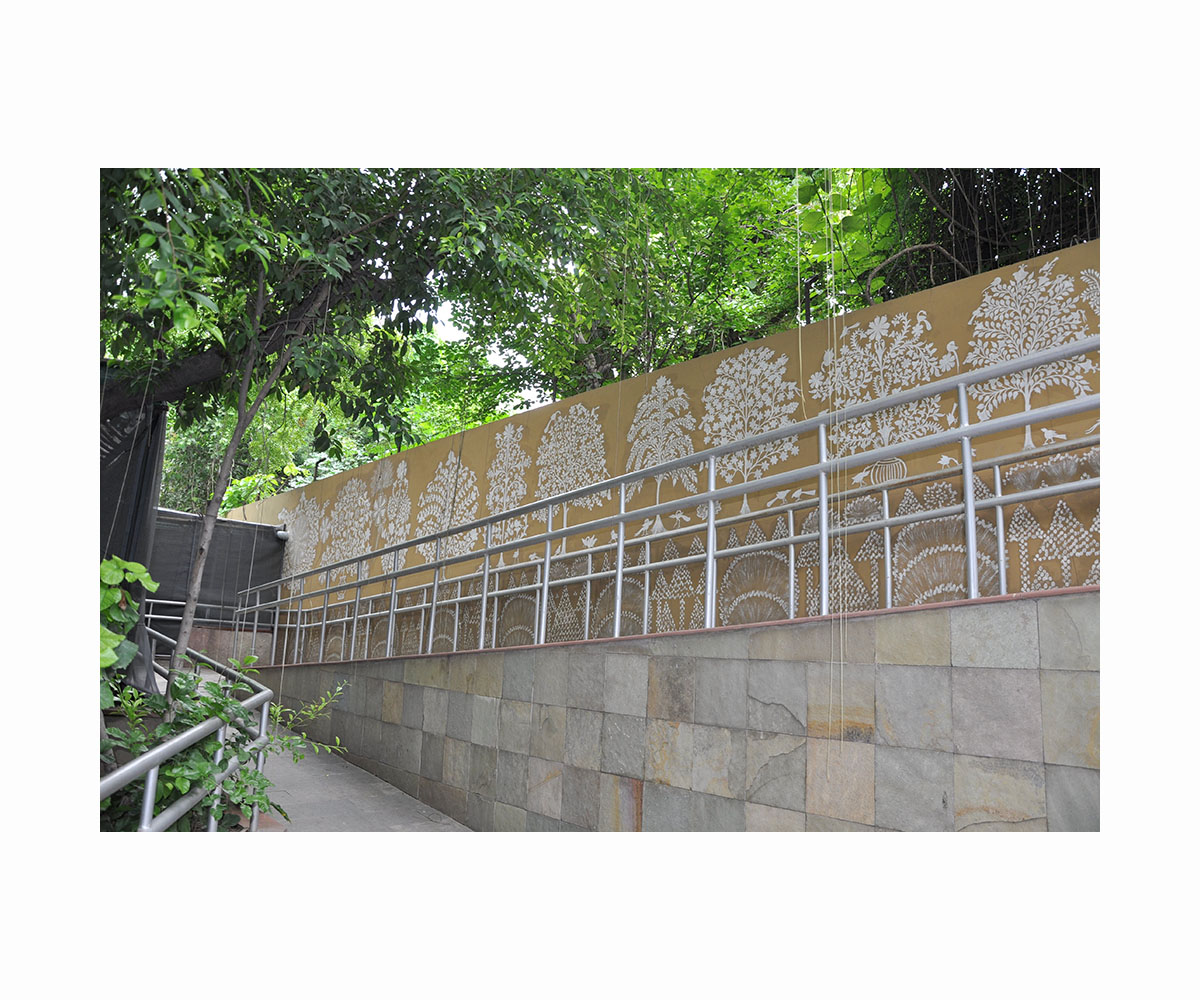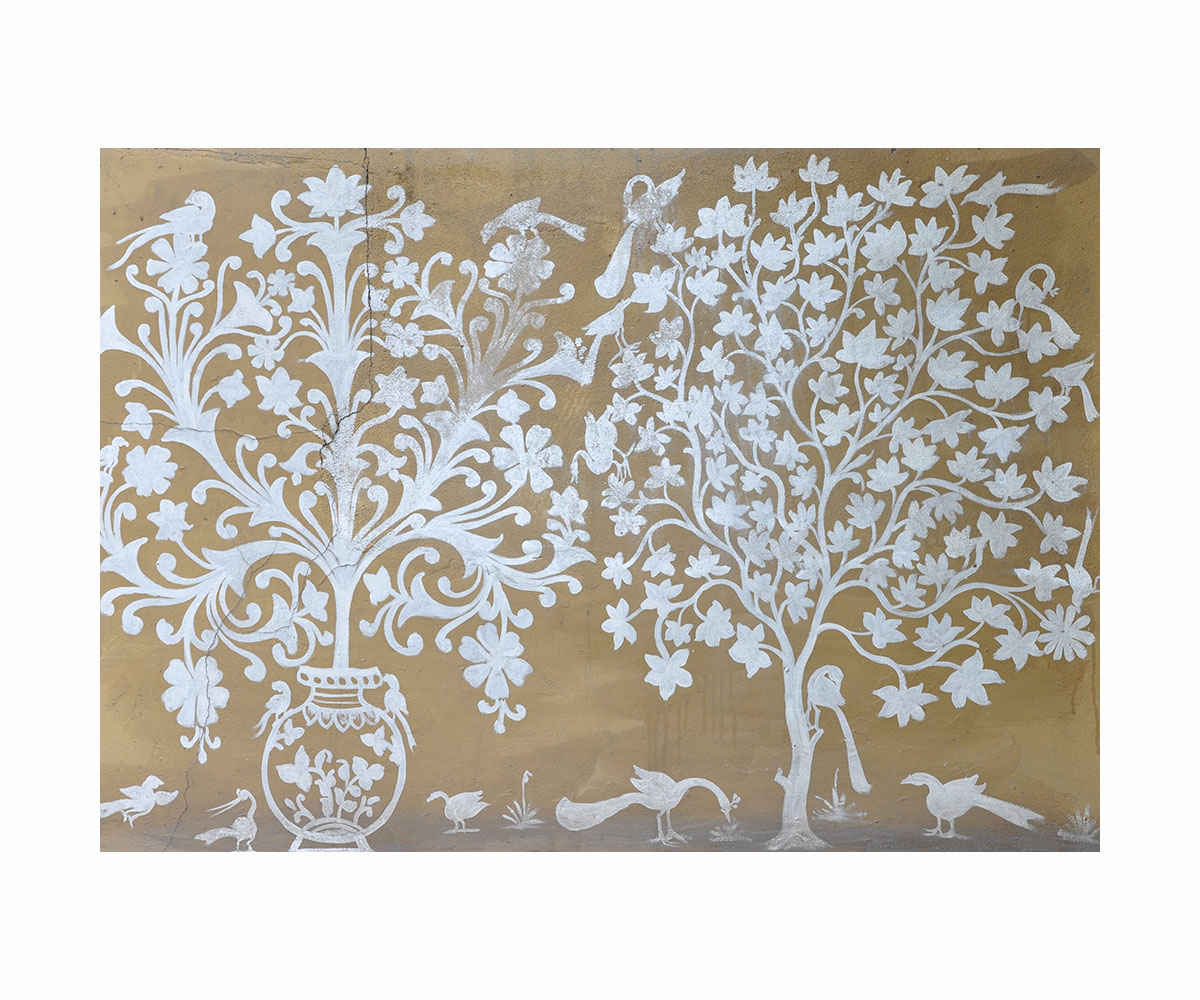ARTICLE
Jhoti
A form of decorative art, jhoti or chita is widely practised in the state of Odisha. These designs are either created on the floor or the wall, though when created on the floor using dry rice powder they are referred to as muruja. Unlike the colourful rangoli, the jhoti is only created in white colour, using a semi liquid paste of rice or pithau.
Jhoti is created during festivals such as Basanti, Manabashaa Gurubaara, Kaartika, Dola, Jhulana, Dhana Lakshmi puja, Gaja Lakshmi puja and on the Thursdays of the month of margashira (November–December), when goddess Lakshmi is worshipped. Thus a popular design created for the jhoti is the swapna padma chita, where the lotus (a symbol associated with goddess Lakshmi) forms the central motif. Like other forms such as the aipan and the alpona, jhoti is also created on a background of red earth, called dhau. Other occasions also have specific designs which are created for special occasions. During Lakshmi puja, as a sign of prosperity, the walls of homes are painted with images of dhaana shisaas or heaps of paddy after it has been winnowed. They are made by using the pithau and drawing it with fingernails directly on the wall to create long, smooth-flowing lines. While this is a popular motif, a common composition involves arranging it in a triangular shape. Similarly, during Durga Puja, designs involve superimposing red and white dots as symbols of the deities, Shiva and Shakti. Other popular symbols include flowers, conch shells, peacocks, elephants, fish and other floral and geometrical designs. While predominantly drawn with the fingers, a twig with one end wrapped with cloth is also used to create a kind of brush to design the jhoti.
Apart from being drawn on walls and floors, jhoti may also be drawn on some objects of daily use such as pidhaa, a wooden plank used for seating; grain bins, manna; and measuring instruments used in kitchens. The jhoti instead of being swept away with a broom is cleaned with the use of a wet cloth.
Bibliography
Our website is currently undergoing maintenance and re-design, due to which we have had to take down some of our bibliographies. While these will be re-published shortly, you can request references for specific articles by writing to hellomapacademy@map-india.org.











![The façade of the Maneckji Seth Agiary, a Zoroastrian fire temple, is a standout example of the popularity of the Persian Revival Style in Western India in the 19th and 20th centuries. This style was often seen in the architectural patronage of the Parsis, who emerged as one of the most influential mercantile communities of British India. Popular motifs of this style, like the mythical lamasus (winged bulls with human heads) and the faravahar (a winged guardian spirit in Zoroastrianism), drew on the historical art and architecture of the Achaemenid and Sasanian empires from sites like Persepolis, Bisotun, Taq-e Bostan, Naqsh-e Rostam and Naqsh-e Rajab in Persia.
The Parsi community’s adoption of this style occurred largely due to their networks of global commerce and politics, allowing them to access and translate research of ancient Persia into visible symbols that underlined their association with antiquity, imperial power, and art.
نمای آتشکدهی زرتشتی مانِکجی سِت نمونهی بارزی از رواج سبک «احیای [معماری] ایرانی» در غرب هند طی سدههای نوزدهم و بیستم است. این سبک غالباً در بناهایی دیده میشد که پارسیان، از بانفوذترین جوامع بازرگان در هند بریتانیا، بانیشان بودند. نقشمایههای محبوب این سبک، مانند گاو بالدار اساطیری (لاماسو) و فَروَهَر (روح بالدار نگهبان در دین زرتشت)، برگرفته از هنر و معماری شاهنشاهی هخامنشی و ساسانی، در جاهایی چون تخت جمشید و بیستون و طاق بستان و نقش رستم و نقش رجب، بود.
اقتباس جامعهی پارسیان از این سبک بسیار مرهون روابط گستردهی تجاری و سیاسی آنها بود که دسترس به پژوهشها دربارهی ایران باستان و برگردانیدن آنها به نمادهای بصری را ممکن میکرد و بر پیوند پارسیان با دوران باستان و قدرت شاهنشاهی و هنر تأکید میکرد.](https://mapacademy.io/wp-content/plugins/instagram-feed/img/placeholder.png)
